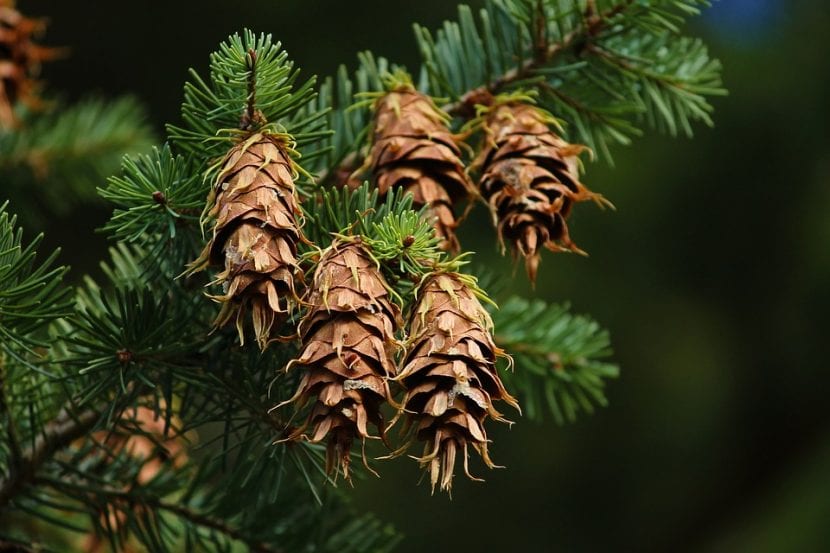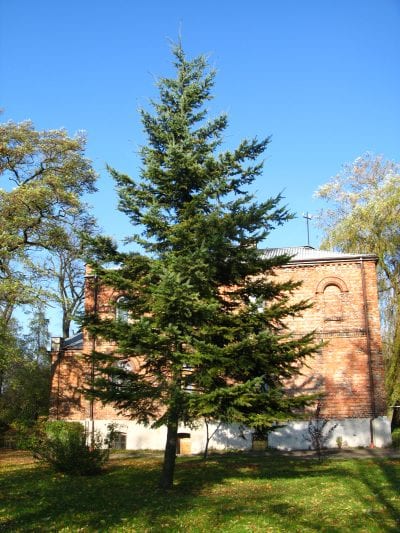
Image - Wikimedia / Neptuul
There are small conifers, others medium, others large and others imposing. The Douglas fir belongs to the latter group. With a height of between 60 and 75 meters, it is the third tallest in the world, ranking behind the sequoia sempervirens (redwood) and Sequoiadendron giganteum (giant sequoia).
With that characteristic, very few would consider having it in a garden, right? And it is not for less, because the diameter of the trunk does not leave indifferent: from 1,5 to 2 meters. Even so, being very resistant to frost and having a slow growth, it is a very interesting species for spacious grounds.
Origin and characteristics

It is a conifer known as Green Douglasia, Rocky False Green Hemlock, Oregon Pine, Oregon Douglas, or Douglas Fir native to North America, from southwestern Canada to central California in the United States. As we said, it can reach a height of 75 meters, although specimens of 100-120 meters have been found with a trunk diameter of 4,5 to 6m.
Its growth rate is slow, but its life expectancy is very long: at least it can reach 500 years of age, and sometimes exceeds 1000. It is characterized by having a straight trunk, with soft bark and gray when young and with adult cracks.
The leaves are arranged in a spiral, somewhat twisted at the base, and are needle-shaped, 5 to 11cm long by 2-3,5cm wide. If they are rubbed, they give off an aroma reminiscent of fruit. The cones are peduncular, 5 to 11cm long by 2-3cm wide, and are brownish-orange when mature. The seeds are 5-6mm long by 3-4mm wide, and have a 12-15mm wing.
Subspecies
There are two:
- Pseudotsuga menziesii var. menziesii- Grows in coastal regions from western and central North America.
- Pseudotsuga menziesii var. glauca: Known as Mountain Douglasia. It grows in the interior of the Rocky Mountains.
Uses
This is a conifer that has been and is used a lot for its wood, which is worked in carpentry and for the construction of huts, pergolas, and outdoor furniture, as well as to make paper.
But also it is an excellent ornamental plant, and for reforestation. In Spain it has been planted since the 1990s in the north of the peninsula, which is where the climate is much more favorable.
What are their cares?

If you want to have a Douglas fir specimen, we recommend giving it the following care:
- Location: it must be outside, in full sun or, if there is strong sunlight, in semi-shade. Plant at a distance of at least 6-7 meters from walls, pipes, etc.
- Earth: grows in fertile soils, which are rich in organic matter, and fresh.
- Irrigation: about 3-4 times a week in summer, and somewhat less the rest.
- Subscriber: in spring and summer with Organic fertilizers.
- Multiplication: by seeds in winter (they need to be cold before germinating).
- Rusticity: it resists up to -18ºC, but it does not live in tropical climates or in those that are very hot. In areas like the Mediterranean, for example, it can only be grown without problems in mountainous regions.
Did you know this tree?